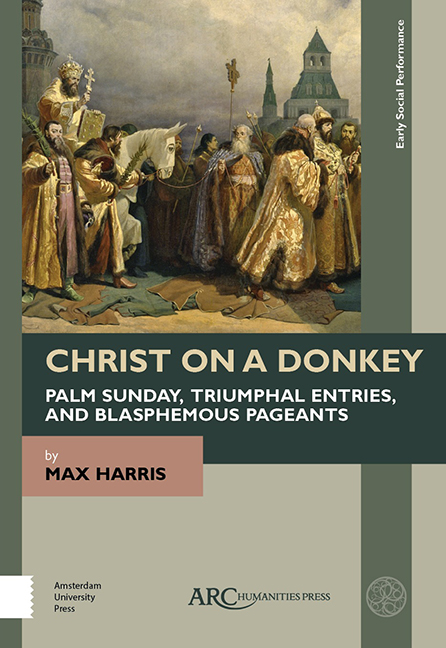17 - Baroque Splendour and Catholic Enlightenment
Published online by Cambridge University Press: 20 November 2020
Summary
IN THOSE PARTS of Europe that remained Roman Catholic, the fate of palmesels and other Palm Sunday processional images of Christ on a donkey again varied with location. In the predominantly German Holy Roman Empire, as well as in neighbouring Poland, Catholic opposition to the palmesel and other “superstitions” peaked during the lateeighteenth-century Catholic Enlightenment. Northern Italy, then part of the Empire, suffered a similar suppression of its palmesels. In Spain, where wheeled images of Christ on a donkey were unknown, “a new and specialized genre of sculpture” emerged during the sixteenth century. Penitential confraternities in Seville and elsewhere commissioned the making of life-size images of Christ's passion to be carried in Holy Week processions on the shoulders of teams of bearers. Over the centuries, these portable images, still very much in use throughout Spain and Latin America, have become increasingly elaborate. Images of Christ on a donkey, also carried rather than pulled on wheels, were a late addition to this genre. In this chapter, I focus first on the suppression of palmesels north of the Alps during the Catholic Enlightenment, and secondly on the development of the distinct Spanish tradition of processional images of Christ on a donkey. In Chapter 18, I document the evidence of palmesels in northern Italy, paying particular attention to a surviving example from Verona once believed, according to Protestant slander, to contain the sacred relics of Christ's own donkey.
During what has come to be known as the Catholic Enlightenment, a desire on the part of high-ranking Catholic clergy to “harmonize faith and reason” found expression, at least in part, in a distaste for the excesses of the Baroque and for the perceived improprieties of popular religion. A case in point is the celebrated palmesel of Nonnberg Abbey in Salzburg, now better known as the monastery where Maria von Trapp, of Sound of Music fame, was a postulant. Palm Sunday at the abbey had once been a splendid occasion, customarily attended, since at least 1430, by each succeeding prince-archbishop of Salzburg in the first year of his reign. Michael von Küenberg, archbishop from 1554 to 1560, rode to the festivities “on a splendid white horse covered in red velvet, while himself wearing his papal legate's hat and being draped in a purple cloak.”
- Type
- Chapter
- Information
- Publisher: Amsterdam University PressPrint publication year: 2019



